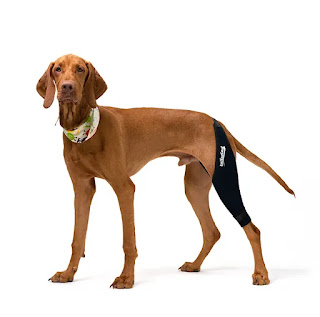In the realm of pet care, the health and well-being of our canine companions are paramount. In our hearts, dogs are not merely pets; they are cherished members of our family. However, when faced with leg injuries or mobility issues, their quality of life can be severely affected. It’s in these moments that the importance of leg braces for dogs becomes apparent. In this article, we will explore the essential need for leg braces in dogs, shedding light on how these orthopedic devices can improve a dog’s comfort, mobility, and overall happiness.
Understanding the Role of Leg Braces
Leg braces for dogs, also known as canine leg orthoses, are specialized orthopedic devices designed to provide targeted support and stability to dogs dealing with various leg conditions. These braces go beyond being mere accessories; they are crucial tools that can significantly impact a dog’s life.
Relief from Pain and Discomfort
One of the primary reasons dogs may need leg braces is to alleviate pain and discomfort caused by injuries or chronic conditions. Whether it’s a torn ligament, arthritis, or a joint disorder, dog leg braces can offer immediate relief by stabilizing the affected area, reducing strain, and facilitating the healing process.
Restoring Mobility
Injuries or mobility issues can severely limit a dog’s ability to move freely. Dog leg braces have the power to restore mobility by providing the necessary support to weakened or injured limbs. This transformation enables dogs to engage in physical activities and enjoy a better quality of life.
Enhancing Stability
For dogs with balance and stability issues, leg braces can be a game-changer. These devices provide the extra support needed to navigate uneven terrain and reduce the risk of falls. The result is a more confident and secure dog.
Post-Surgery Rehabilitation
After surgical procedures, dogs often require support and protection for their healing limbs. Leg braces are instrumental in post-surgery rehabilitation, ensuring that the affected area heals properly and minimizing the risk of further injury during recovery.
Aging Gracefully
As dogs age, their joints naturally deteriorate, leading to stiffness and discomfort. Leg braces can ease the strain on aging joints, enhancing a senior dog’s comfort and mobility. This is especially important for maintaining a good quality of life during their golden years.
Customized Solutions
Leg braces for dogs are not one-size-fits-all. They come in various types and sizes, allowing for customization to meet the specific needs of each dog. Veterinarians work closely with brace manufacturers to ensure that each brace is tailored to the individual dog’s condition.
A Collaborative Effort
The need for leg braces in dogs often involves a collaborative effort between veterinarians, pet owners, and brace manufacturers. Veterinarians play a crucial role in diagnosing the issue, prescribing the appropriate brace, and monitoring progress throughout the treatment process.
Gradual Adaptation
Introducing a dog to a leg brace is a gradual process. Dogs need time to adapt to the sensation of wearing a brace. Pet owners must follow a careful plan, gradually increasing the duration of wear to ensure their dog’s comfort and acceptance of the device.
Embracing the Benefits
The use of leg braces in dogs goes beyond physical support; it encompasses the emotional well-being of the animal. Dogs experience reduced stress, increased confidence, and a better overall quality of life when they regain their mobility and comfort.
Conclusion
In the world of pet care, leg braces for dogs stand as a testament to the commitment of pet owners to ensure the well-being of their furry companions. These orthopedic devices offer relief from pain, restoration of mobility, and enhanced stability. Whether it’s for post-surgery rehabilitation, managing chronic conditions, or helping aging dogs, leg braces play a pivotal role in improving a dog’s comfort and overall happiness. Their use underscores the deep bond between humans and their canine companions, a bond that is strengthened by the dedication to providing the best possible care.









